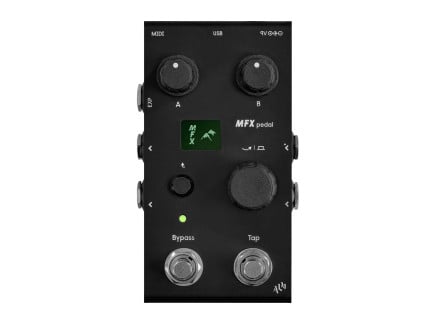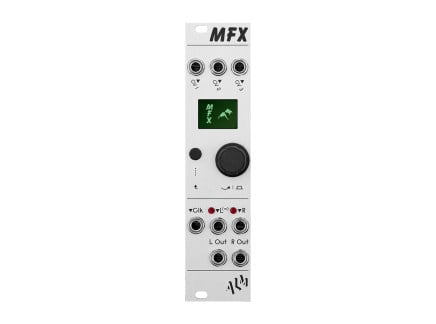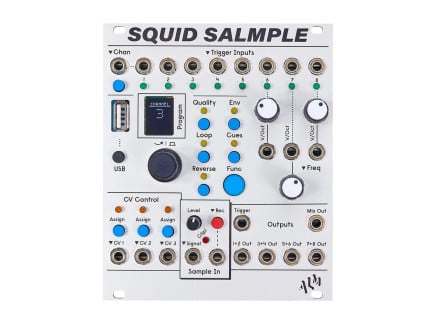It goes without saying that ALM Busy Circuits is one of the most beloved makers of Eurorack modules these days. Favorites like Pamela's Workout and Squid Salmple are modern modular mainstays, thanks to ALM's ability to design modules that effortlessly balance features, flexibility, and fun.
Now going outside of the rack for the first time, ALM is presenting their first effects pedal at Superbooth 2024: the MFX Pedal. Based on their Eurorack module of the same name, MFX Pedal boasts a variety of different effects inside, ranging from recreations of legacy hardware pieces to contemporary granular, glitch, and more.
But enough with the preamble—let's get into what the MFX Pedal is all about.
What's Up With the MFX Pedal?
Unlike other cross-format ports of synthesizers or effects processors, the MFX Pedal offers effectively the same interface as the module version. Navigation is handled with an OLED display, encoder, and a simple push button. Given the small screen and simple navigation scheme, ALM has taken care to ensure that effects engines aren't burdened with overbearing menus. But should you need to dive into deeper configurations (and we think some of you might want to), you can expect to be zipping around pages in no time.
Now that it's no longer a Eurorack module, the CV inputs have been replaced with things that make a bit more sense for a pedal to have. The three CV inputs are swapped out for two assignable knobs (A and B) as well as an expression pedal input—all of which are assignable to any parameter of an effect. Likewise, the Clock input is gone in favor of a Tap Tempo footswitch.
Of course, the Eurorack version of MFX is extendable with Axon-1 and Axon-2—expander modules with additional assignable CV inputs. While this paradigm doesn't exactly translate to the pedal world, ALM did include a MIDI input on the MFX Pedal. The open-ended MIDI control assignment system lets you accept external CCs to modulate parameters, while MIDI beat clock can be used to synchronize timings with DAWs or other effects units.
Perhaps to no surprise, the effects within the MFX Pedal are exactly the same as the Eurorack MFX. We've covered the different effects of MFX in a prior article, so we recommend heading over there if you're curious for more details on each of these effects algorithms and, where applicable, a bit of history on the legacy pieces that inspired them. However, we think there are a few particular effects worth shouting out here—they're all great, of course, but these are a selection of algorithms that help the MFX Pedal stand out from the crowd a bit.
Soundscape aficionados should look into the Crumbular Echo: a multi-tap delay meets granular effect to stretch and scatter sounds. More on the reverb side, the Ursa Minor Echoverb recreates the vibe of the Ursa Major "Space Station," an early reverb effects processor that can break down into more multitap-like sounds. Similarly, shoegaze fans will dig the Quaidra Reverb—certainly an emulation of the Alesis Quadraverb.
On the weirder side of things, the 2051 Bit Corrupter is the choice for all things glitch and decimation. Ring mod and frequency shifting are favorite effects among the PC staff, of which you can find both in the aptly named Ring + Freq Modulator. And for some additional bizarre, skronk-worthy tones, the Squoval Resonator puts a bunch of resonant bandpass filters at your disposal.
The release of the MFX Pedal is proving that effects pedals seem like an increasingly viable way for Eurorack designers to explore offering products to broader user markets. We're big fans of the ALM stuff, so we're stoked that more folks will be able to get a taste of what they have to offer. Their ongoing enthusiasm for early digital-era effects and sounds puts them in a unique place among many other makers, and we're keen to see how the broader world of instrumentalists takes to the ALM charm.












